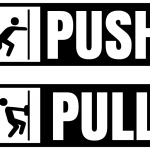“Future-friendly content design starts from sharing a common language with the users we are designing for and the wider team we design with. The space and context we are designing for has inherent terms, relationships, and rules. Our role as UX researchers and designers is to tease out these mental models and resolve them into an overall picture of a subject domain.” – Carrie Hane and Mike Atherton, Designing Future Friendly Content
I recently began work on a project in an area completely foreign to me: construction. Although I’ve owned my own tool kit since my 17th birthday (thanks Mom and Dad!) and I’ve successfully hung paintings in my house, I’m not what you’d call an expert.
Content strategists aren’t expected to be experts in every industry we might ever work in. But the question remains: how do you learn enough to do your job well?
Learning the Subject Domain
I’ve always relied heavily on research to better understand the subject I’m going to be strategizing and writing about. But sometimes, halfway through a project, I find that my research led me astray. It was too focused in one area, or influenced by louder stakeholders, or missed entirely an area that we need to address but that no one is responsible for. In other words, my research tends to be influenced by my client, and I don’t have the expertise to understand what else is going on in the field, outside of their areas of focus.
Carrie Hane and Mike Atherton recommend researching the subject domain. I love this idea. It’s a method of framing research to build out a map of the subject at hand. And it’s the approach I took in my recent construction-focused workshop.
Domain Mapping Workshop (my version!)
Conversation can get a team to agreement on the scope of a subject’s domain, but as I mentioned before, my main concern was that any one area (or one person) would dominate the discussion and bias our domain map. I chose to have the (6 person) group participate in 2-3 person exercises, so that we would hear different perspectives throughout the day.
Card Sort
Our first exercise was a conventional open card sort. Based on our prior research, I provided the group with a list of 115 items that relate in one way or another to construction. As it happens, I was only familiar with a fraction of the terms – but that didn’t matter. In addition, 115 items is WAY too many for a traditional card sort. But that didn’t matter either, for our purposes.What did matter was that the team was familiar with the items – so familiar that they quickly grouped them and labeled the groups things like “Tools,” “Supplies” (two items I would have thought were the same but actually had distinctly different definitions), “Sites,” “Projects,” and “Hazards.”
Relationship Mapping
They ended up with about 20 groups. Now I broke them up into 3 teams of 2. Each team took a set of the 20 terms (the titles for the groups), and mapped them to one another. One group did a hierarchy, as though repeating the card sort. Another group created a timeline. Another created an affinity map. Each group added some items as they went, because different items became relevant when viewed through their new lens. Each group presented to the other teams, and was given feedback – they even updated their maps based on the feedback
Domain Mapping
Lastly, we began arranging our domain map, following Carrie and Mike’s guidelines. Where I asked the teams to take the lead on Relationship Mapping, I now set down to validate what I’d learned from them. I took the whiteboard marker, and began to draw relationships between our central user, and the supplies, tools, and other topics. The group corrected and validated the mapping as we went.Where the relationship mapping activity had been freeform, this was more directed: we were looking to display what items were subsets of one another, and which ones impacted others in a specific way.
Definitions
Finally, after I left for the day, I took each item listed in the domain, and put it into a table. In the table I listed a definition and several examples of each item. I sent the list back to the client, and they fixed any misconceptions. They even added items that hadn’t made it to our initial domain map.
More on Domain Mapping
I’m very excited about to spread some news on behalf of Carrie and Mike: they are writing a book! I look forward to finessing my domain mapping abilities with their expert advice.
Until next May, I’ll keep going with trial and error. For now, I’m just excited to have a process that has helped fill in the gaps of subject matter expertise for any strategic project.



Very interesting. Understanding domain mapping (and domain models?) is so important for a strategic and future-friendly content architecture. Michael Andrews explains it so well in this post that we use it as reference, sometimes: https://storyneedle.com/wine-content-domain-models/